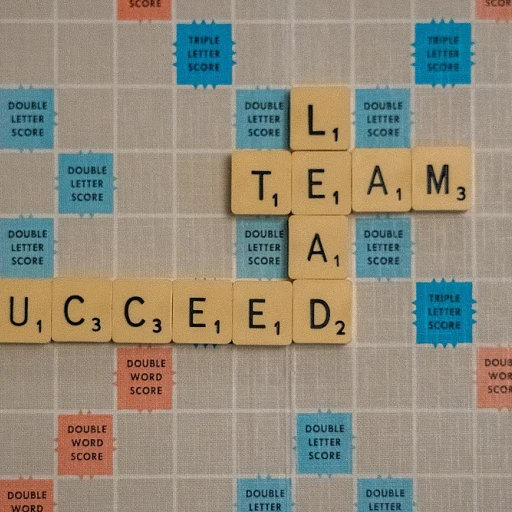
Understanding the Importance of Employee Recognition
The Significance of Recognizing Employees
Employee recognition is more than just a nice-to-have; it's a crucial component of a thriving workplace. When employees feel valued and appreciated, their engagement and job satisfaction tend to soar. This, in turn, can lead to improved performance and employee retention. Recognition programs are designed to align with company values, ensuring that employees' hard work and dedication are acknowledged in meaningful ways.
Recognition programs can take various forms, from formal policies to informal peer recognition initiatives. The impact of these programs is profound, as they help create a positive work environment where team members feel motivated and appreciated. By implementing a structured recognition program, companies can foster a culture of appreciation that resonates throughout the organization.
For those looking to understand the advantages of implementing such strategies, exploring retention and referral strategies can provide valuable insights. These strategies not only enhance employee engagement but also contribute to a more cohesive and motivated team.
In the following sections, we will delve into the key elements of crafting an effective recognition program template, explore how to design a tailored program, and discuss the best practices for implementation. By understanding the importance of employee recognition, companies can take the first step towards creating a workplace where employees feel truly valued.
Key Elements of an Employee Recognition Program Template
Core Components of Effective Recognition Practices
Establishing a robust employee recognition program template demands thoughtful consideration of several key elements. Successfully recognizing and rewarding employees can have a significant impact on their engagement and job satisfaction. Here, we outline the essential aspects that make up a well-rounded recognition initiative.- Alignment with Company Values:
- Diverse Recognition Methods:
- Peer Recognition Opportunities:
- Rewarding Exemplary Performance:
- Clear Communication and Policy Transparency:
- Feedback and Continuous Improvement:
Designing a Tailored Recognition Program
Creating a Personalized Recognition Experience
Designing a recognition program that resonates with your team involves taking a personalized approach. A well-crafted program considers the unique culture and values of your company, ensuring that each employee feels acknowledged and appreciated for their hard work and dedication. To effectively tailor your recognition program, start by gathering feedback and insights from employees. Conduct surveys and assessments to understand what types of recognition they value most and how they prefer to be recognized. This data-driven approach ensures that the program aligns with employee preferences, enhancing its impact. Creating recognition templates and messages that are specific to your organization is also crucial. Ensure that these align with your company values and mission, fostering a positive work environment where employees feel their contributions are important. Customization is key. Consider various forms of recognition such as peer recognition, public appreciation in meetings, personalized notes, or even formal awards. By offering a mix of recognition types, you cater to different employee preferences and provide opportunities for both informal and formal acknowledgments. Additionally, don’t overlook the importance of setting a clear policy. A policy template can establish guidelines ensuring consistency and fairness across the board. This helps avoid favoritism and ensures all team members have an equal opportunity to be celebrated. In conclusion, thoughtfully designing a recognition program requires careful consideration of feedback, company culture, and employee preferences. By doing so, you create a system where recognition becomes a part of everyday work life, ultimately leading to improved employee engagement and retention. To further enhance employee satisfaction, consider understanding employee stock options a guide for employees as part of your overall compensation strategy.Implementing the Recognition Program Effectively
Seamless Execution and Communication
Building an ideal employee recognition program is truly valuable, but the way you put it into action can make all the difference. Effective implementation sets the foundation for a positive, reinforcing experience that aligns with your company values. Here's where a considered policy template comes into play, ensuring smooth application and clarity of the recognition program.
Increasing Participation through Clarity
A clear and straightforward recognition programs policy can significantly enhance participation and engagement. When introducing a new program, clearly define the objectives, eligibility criteria, selection process, and recognition messages. By offering well-documented guidelines, you help team members understand their role and motivate them to participate actively through peer recognition and other means.
Championing Recognition within the Company
Gain the support and involvement of your leadership team to help champion the program throughout the organizational structure. Their appreciation and acknowledgment of employees can have a ripple effect, cultivating a culture that values hard work and dedication. Set an example by participating in the recognition activities, which encourages others to follow suit.
Tailoring Communication Channels for Reach
You might consider customizing communication channels to reach different departments or teams effectively. Whether through emails, instant messaging platforms, or even during team meetings, ensure the policy and its updates are accessible. This not only spreads awareness but also reinforces the importance of the program within the company’s operations.
Feedback Loops to Foster Continuous Improvement
Finally, establishing feedback mechanisms like surveys and employee feedback sessions promotes a culture of continuous improvement. This gives employees the opportunity to voice their opinions on the effectiveness of the program, ensuring it meets the needs and expectations of your workforce. By actively listening to their insights, the program can evolve to better address employee motivation and job satisfaction.
Measuring the Success of Your Recognition Program
Evaluating the Outcomes of Employee Recognition
Successfully measuring the impact of your employee recognition program is essential to ensure its effectiveness and alignment with company values. By adopting the right tools and techniques, you can assess whether the program is truly enhancing employee engagement and job satisfaction, and driving positive work culture. Consider the following strategies to effectively measure your recognition program:- Surveys and Feedback: Gather direct input from employees through surveys focused on recognition experiences and how they feel about the current programs. Encouraging honest feedback provides insights into potential areas of improvement or customization.
- Performance Metrics: Analyze changes in performance metrics post-implementation. Look for improvements in work dedication, team member collaboration, and overall employee productivity as indicators of successful employee recognition.
- Employee Retention Rates: Review the retention statistics to identify the program's impact on keeping employees in the company. A successful recognition policy can lead to increased loyalty and reduce turnover rates.
- Peer Recognition Trends: Monitor peer recognition activities within the company. Understanding how frequently and meaningfully employees engage in peer recognition can showcase the program's cultural integration.
- Employee Engagement Scores: Use existing or new engagement surveys to track changes over time. Improved engagement scores can signal that employees feel valued and appreciated.
- Qualitative Examples: Collect specific examples of increased motivation or enhanced team performance as a result of recognition initiatives. These anecdotal references provide context and narrative to quantitative data.
Overcoming Challenges in Employee Recognition
Building Resilience in Employee Recognition
Recognizing employees shouldn’t just be about handing out praises; it involves facing and overcoming challenges to create a sustainable and impactful recognition program. Here are some key obstacles organizations may face when implementing a recognition program and ways to tackle them.- Consistency in Recognition: Companies often struggle with maintaining consistent employee recognition. Creating recognition templates and developing a clear programs policy can help ensure everyone, from managers to peers, understands how to effectively use the programs. Training sessions are crucial in establishing this consistency, offering guidance on how to best leverage recognition tools.
- Subjectivity in Recognition: It’s common for biases to creep into recognition programs, affecting employee engagement and job satisfaction. Implementing surveys and collecting feedback from team members can help in identifying and correcting biases. It’s essential for recognition to align with company values, encouraging objective and equitable appreciation for employees’ hard work.
- Adapting to Diverse Needs: Employees have varied preferences for how they want to be celebrated, and personalized recognition messages can make them feel more valued. Design flexible recognition policies that allow managers to customize awards and appreciation gestures to suit individual employee needs and local company cultures.
- Keeping the Program Relevant: Over time, recognition programs might lose their impact if not continuously improved. Regularly revisiting the employee recognition templates can keep your program fresh and engaging. Gathering insights from peer recognition and performance reviews can offer new ideas for rewarding employees in meaningful ways.
- Measuring Impact: The ultimate test of any recognition program is its effectiveness. Accurate metrics should be developed to measure improvements in employee retention, work dedication, and overall team morale. Benchmarking against industry standards or setting up internal measures can ensure the program’s success and longevity.












